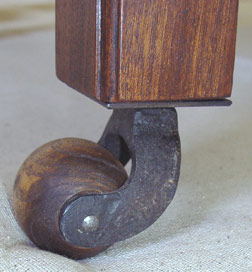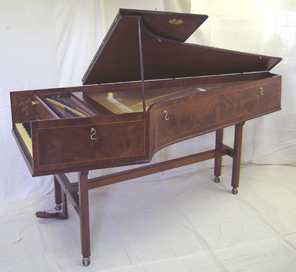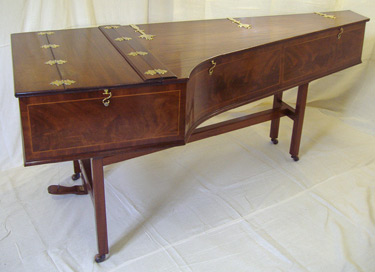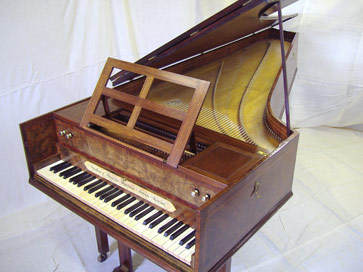Archive
Harpsichord by Jacob & Abraham Kirckman c.1775
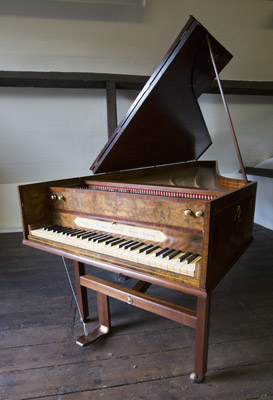
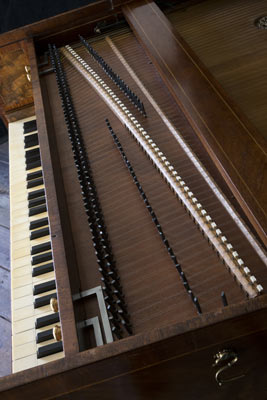
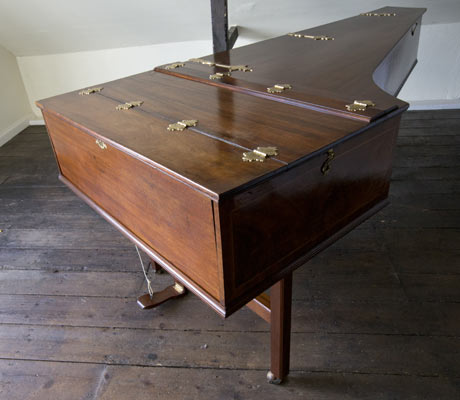
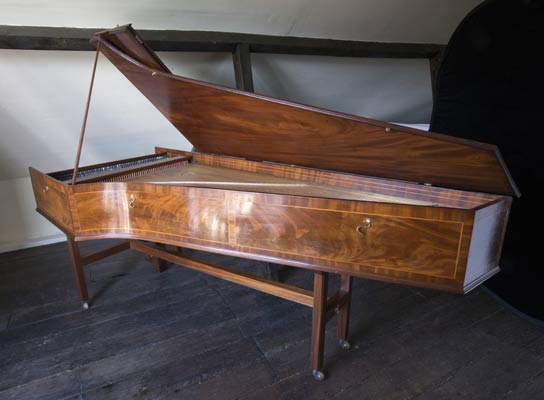
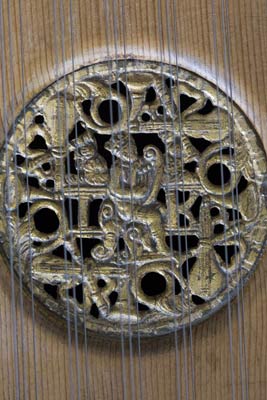
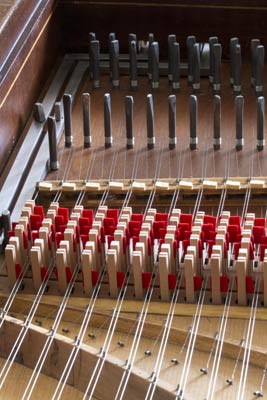
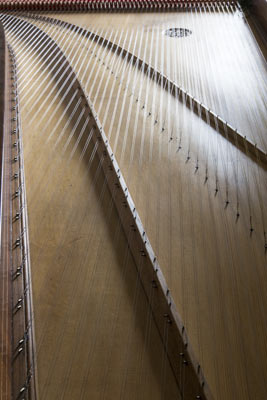
This harpsichord by Jacob & Abraham Kirckman was originally constructed as a typical 18th century English single manual harpsichord with a compass of 5 octaves (60 notes; FF,GG-f3) with 2 × 8′, 1 × 4′, harp-stop and pedal.
The harpsichord had been converted to a double manual in 1929, with the disposition altered to include an 8′ lute stop. The instrument had developed structural problems due to this conversion, and our brief was to return the harpsichord to its original configuration. This was carried out after careful reference to surviving original harpsichords by Kirckman.
The wrestplank was in very poor condition, weakened by being cut through to accommodate the lute register. The 8′ tuning pins were over-sized replacements and the wrestplank was split through the line of the pins. The 4′ tuning pins were replacements of the modern ‘square-head’ type. In the bass the 4′ tuning pins had been moved and a rail with bending pins had been added to ensure that those strings cleared the lute jacks. The 4’ nut was a poor replacement made in oak.
Judging the original wrestplank to be beyond repair due to the previous alterations, the damage and the severe twist it had subsequently acquired, a new wrestplank was made and fitted, using the original 8′ nut and a new 4′ nut. The harp stop was original and was re-leathered, and the upper guides repaired. Period style levers and brass knobs were made and fitted. Three sets of period style tuning pins were made to replace the existing pins.
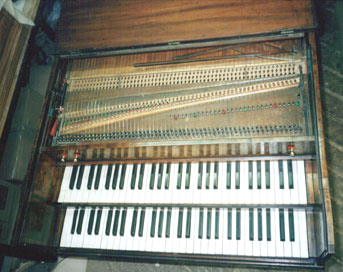
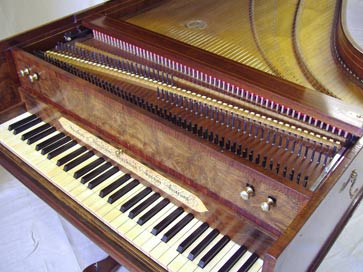
The baseboard, spine and cheek had all been extended forwards and the front portion of the lid flap had been extended to fit the lengthened case. These extensions were removed and the edges of the case repaired, veneered and banded.
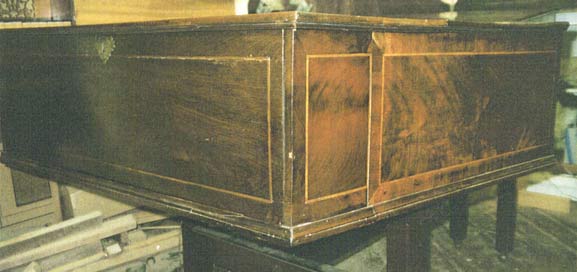
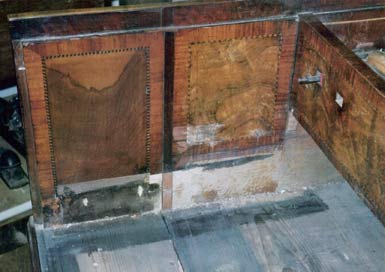
The two keyboards were of a modern type used in pianos. The front board had been cut away to accommodate the upper keyboard and two smaller replacement namebattens had been fitted (the original namebatten does not survive). A replacement keyframe and keyboard were made to the Kirckman pattern, using reclaimed 18th century ivory naturals and ebony sharps. The front board was extended in oak to return it to its original size, and banded in tulip-wood to match. A replacement namebatten was made and written.
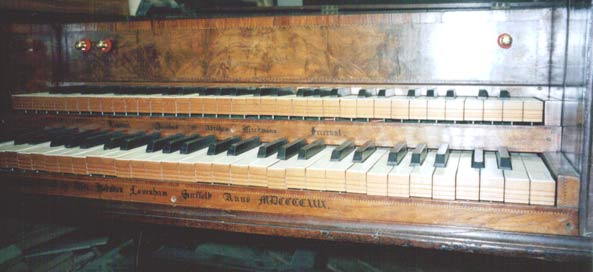

The soundboard was badly split and damaged in the extreme treble section and there had been numerous poor repairs to this. The treble section of the 8’ hitchpin rail was a replacement which did not match and the hitchpins in this section were iron (instead of plated brass), as were all of the 4’ hitchpins. The treble end of the 8’ bridge was broken, and the 4’ bridge was a poor replacement made of oak. The original brass rose was present in the soundboard. Due to the extremely poor condition of the treble section of the soundboard it was replaced, with the 8' bridge being repaired and replaced on the new section of soundboard, and the treble section of the 8' hitchpin was replaced. The existing oak 4' bridge was replaced in beech.
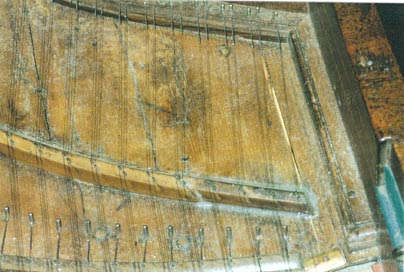
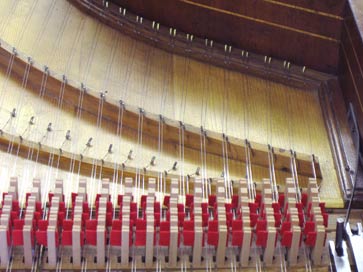
The original brass strap hinges were missing, but the outline of them could be seen on the lid. Also visible were marks on the surface of the lid and flap where there had been battens, and where the screws for the small decorative hinges had been. Battens had been added on the underside of the lid and flap with butt hinges used for the flaps and small shaped hinges on the underside of the lid. The lid and flap were repaired and the battens were removed from their undersides. Replacement battens were fitted to the lid, and replacement hinges were fitted to match the original pattern. A new frontboard was made. Replacement brass hooks, eyes, escutcheon plate and lock were fitted. All brasswork replaced on this instrument was to patterns from Kirckman harpsichords.
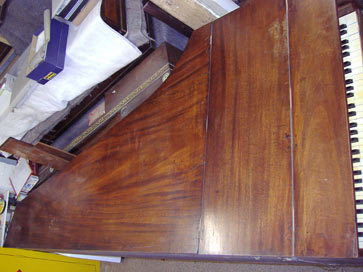
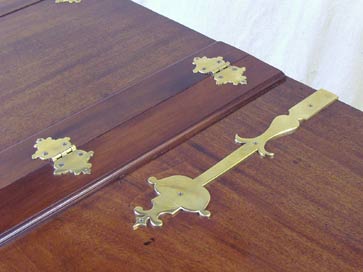
The existing stand was not original, so a replacement stand was made to the Kirckman pattern with period style casters, bolts and bolt covers.
